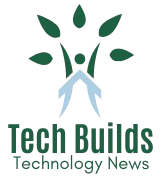VelocityReconWorkflow Processes
Automotive News Latest Car & Auto Stories
The Kijang was one of a series of BUV’s, or Basic Utility Vehicles, developed for developing markets by several global manufacturers in the 1960s and 1970s. The Kijang was very successful for Toyota Astra Motor, with the 100,000th example leaving the line in February 1985. Production was almost entirely localized by the mid-eighties, with engine parts as well beginning to be produced in Indonesia by January 1985.
- With the questioning of diesel and the rise of electric power, the automotive industry is undergoing a revolution.
- Together, Hyundai and Kia serve as the official automotive partner of FIFA — the governing body of the FIFA World Cup™.
- With 19.3 million units manufactured in 2012, China almost doubled the U.S. production of 10.3 million units, while Japan was in third place with 9.9 million units.
- TRW’s steering rack and power steering products have also gained industry-wide recognition.
- AUTOMOTIVE WORLD is a combination of exhibitions & conferences covering important topics in the automotive industry such as automotive electronics, connected car, autonomous driving, EV/HV/FCV, lightweight, processing technology and MaaS.
HPM integrated Honda’s Indonesian automobile businesses, which was previously conducted by four separate companies ranging across vehicle assembly, engine and component manufacturing, and wholesale distribution. Honda first entered Indonesia in the 1960s through PT Imora Motor as its sole national distributor, with its first model Honda T360 pickup. As a response to the vehicle import ban, PT Prospect Motor began local assembly of Honda automobiles in Sunter, North Jakarta. The brand then gained reputation for its passenger cars, contrary to several other Japanese brands which relied on commercial pickups and minivans.
In 1929, before the Great Depression, the world had 32,028,500 automobiles in use, and the U.S. automobile industry produced over 90% of them. After 1945, the U.S. produced about 75 percent of world’s auto production. In 1980, the U.S. was overtaken by Japan and then became world leader again in 1994. In 2006, Japan narrowly passed the U.S. in production Automotive and held this rank until 2009, when China took the top spot with 13.8 million units. With 19.3 million units manufactured in 2012, China almost doubled the U.S. production of 10.3 million units, while Japan was in third place with 9.9 million units. From over to 2012 , the number of automobile models in the U.S. has grown exponentially.
Career
Porsche Automobil Holding SE has a 50.74% voting stake in Volkswagen Group. These were the 15 largest manufacturers by production volume in 2017, according to OICA. In 2022, Tesla’s Gigafactory Berlin-Brandenburg ran into legal challenges due to droughts and falling groundwater levels in the region. Brandenburg’s Economy Minister Joerg Steinbach said that while water supply was sufficient during the first stage, more would be needed once Tesla expands the site. The factory would nearly double the water consumption in the Gruenheide area, with 1.4 million cubic meters being contracted from local authorities per year — enough for a city of around 40,000 people.
Automotive Engineering
PSA and Toyota have a 50-50% joint venture called Toyota Peugeot Citroën Automobile Czech. Isuzu and General Motors has a 50-50% joint venture called Isuzu Truck South Africa. Isuzu and Anadolu Group have a 50-50% joint venture called Anadolu Isuzu. Dongfeng Motor and PSA Group have a 50-50% joint venture called Dongfeng Peugeot-Citroën. Daimler AG and Geely Holding Group have a joint venture called smart Automobile, both companies hold a 50-50% stake. Daimler AG and BYD Auto have a joint venture called Denza, both companies hold a 50-50% stake.
Mobility Services The automotive industry is shifting from being product-centric and asset driven, becoming a more service-oriented industry. Complexity Management Caught between customer expectations and portfolio legacy, next-level complexity management has become a prerequisite for transformation of automotive companies. In the age of software-defined vehicles, Synopsys powers innovation from System to Software and Silicon to drive safety, security, reliability, and quality in the new automotive digital value chain. Our chip design and verification, prototyping, IP, and software security solutions help you create smarter, safer automotive applications. With more than 70 models, the Volkswagen Passenger Cars brand has one of the broadest and most attractive product portfolios in the automobile industry – from the up! The drive technologies offered by the Volkswagen sales network range from efficient petrol and diesel engines and natural gas systems to plug-in hybrids and electric motors.
A strong solutions focus helps manufacturers improve productivity, product quality and worker safety. ABB has installed more than 500,000 robots worldwide, supported by the broadest service network and offering in the industry. Production chain, economic scale, and branding in this industry have met international standard.
